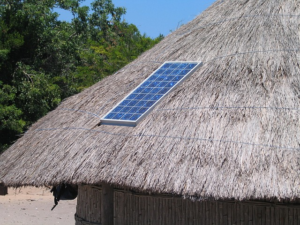
The fourth General Assembly of multilateral body International Solar Alliance (ISA) concluded on Thursday with a promise to achieve USD 1 trillion global investments in solar energy by 2030. The fourth General Assembly of the ISA was held virtually between October 18 and October 21. It was presided over by Union Power and New and Renewable Energy Minister R K Singh, who is also the president of the ISA General Assembly.
“The General Assembly approves a solid action agenda to mobilize USD one trillion… in solar investments by 2030, including a blended finance risk mitigation facility,” ISA said in a statement.
A total of 108 countries participated in the assembly, including 74 member countries, 34 observer and prospective countries, 23 partner organisations and 33 special invitee organisations.
US Special Presidential Envoy for Climate John Kerry delivered the keynote address, and European Commission Executive Vice President for the European Green Deal, Frans Timmermans, addressed the gathering on October 20.
During the General Assembly, two new programmes were launched — management of solar PV panels and battery usage waste and solar hydrogen programme, it said.
The new hydrogen initiative is aimed at enabling the use of solar electricity to produce hydrogen at a more affordable rate than what is available currently (USD 5 per KG), by bringing it down to USD 2 per KG.
Making hydrogen cost competitive with natural gas presents major challenges for both supply and performance. However, bringing down the costs can unlock a cascade of benefits.
The discussions at the assembly highlighted that the MSME clusters can replace diesel gensets with hydrogen, which are viable even at today’s solar hydrogen prices.
The discussions also focused on how ISA’s waste management programme will be pivotal for the growing volume of waste and toxic materials, lack of waste specific legislation, and high cost of waste treatment.
An update on the One Sun One World One Grid (OSOWOG) initiative was also discussed at the assembly.
The concept of a single global grid for solar was first outlined at the First Assembly of the ISA in late 2018. It envisions building and scaling inter-regional energy grids to share solar energy across the globe, leveraging the differences of time zones, seasons, resources, and prices between countries and regions.
The OSOWOG will also help decarbonise energy production, which is today the largest source of global greenhouse gas emissions.
Aiming to synergise its efforts and actions with other similar initiatives globally, OSOWOG has joined hands with GGI (Green Grid Initiative) to form a unified GGI-OSOWOG initiative.
This aims to contribute to the collaborative, rapid development of resilient grids globally — building on continental, regional …….






